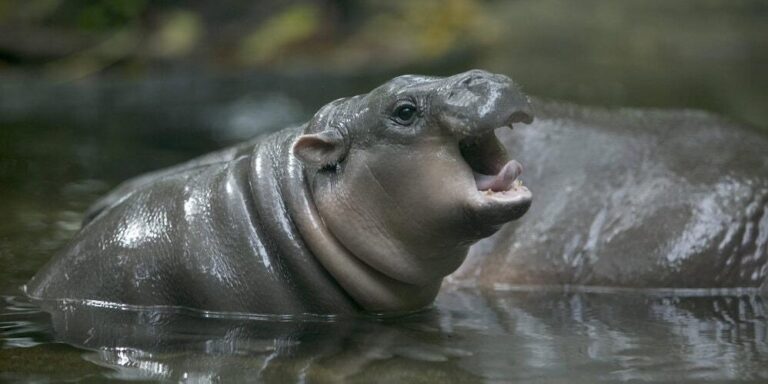Berlin’s Tierpark is bidding farewell to one of its most beloved residents as it prepares to send a pygmy hippo named Toni to a new home in France. The transfer marks a significant moment in international conservation efforts, aiming to support the species’ breeding and genetic diversity. As caretakers make final arrangements, animal enthusiasts and staff alike reflect on Toni’s impact and the collaborative spirit behind the move.
Bon voyage Toni as Berlin Prepares Pygmy Hippo for Transfer to France
Toni, the pygmy hippo, is set to embark on a new chapter as Berlin’s renowned zoo finalizes preparations for his transfer to a French sanctuary. The move comes as part of an international conservation effort aimed at bolstering the species’ genetic diversity and enhancing breeding programs across European institutions. Zoo officials emphasized that every detail of Toni’s journey has been meticulously planned to ensure his comfort and safety. Veterinary teams have conducted thorough health checks, and custom transport enclosures have been designed to replicate Toni’s natural environment as closely as possible during transit.
Key elements of the transfer include:
- Specialized vehicle: Climate-controlled and equipped with soft bedding for maximum comfort.
- Expert care: A veterinary and animal care team will accompany Toni throughout the journey.
- Quarantine protocols: To ensure health safety upon arrival in France.
| Aspect | Details |
|---|---|
| Transfer Distance | ~1,050 km from Berlin to French sanctuary |
| Estimated Travel Time | Approximately 12 hours by road |
| Expected Arrival | Late afternoon, next day |
Detailed Insights into the Habitat and Care Adjustments for Toni’s New Home
Toni’s transfer to her new habitat in France involves a finely tuned balance of environmental and dietary adjustments designed to mimic the conditions of her native West African home. Her new enclosure prioritizes water features such as shallow pools and mud wallows, essential for thermoregulation and skin health. Climate control measures ensure steady humidity levels, an essential factor to prevent skin dehydration. Feeding schedules are revised to include not just a broader variety of aquatic plants and fruits but also specific vegetation local to the RhĂ´ne region, carefully selected to replicate the nutritional profile Toni has thrived on in Berlin.
Care teams on both sides have coordinated a detailed transition plan that emphasizes gradual adaptation, minimizing stress for Toni. Monitoring protocols involve regular health checks and behavioral observations, focusing on activity levels and social interactions within the new environment. Below is a summary of the key habitat adjustments being implemented:
- Temperature Control: Maintained between 24-28°C with humidity at 70-80%
- Water Features: Multiple pools with varying depths for swimming and mud-bathing
- Dietary Expansion: Introduction of local flora to supplement existing diet
- Stress Reduction: Quarantine enclosure with limited human interaction during initial weeks
| Parameter | Berlin Habitat | France Habitat |
|---|---|---|
| Average Temperature | 26°C | 25°C |
| Water Area | 150 m² | 180 m² |
| Primary Food Sources | River plants, tropical fruits | Local aquatic plants, seasonal fruits |
| Enrichment Activities | Interactive feeding, scent trails | Soft mud pits, puzzle feeders |
Recommendations for Zoos Collaborating on International Animal Relocation Projects
Successful international animal relocation hinges on clear communication and rigorous planning between collaborating zoos. Prioritizing animal welfare throughout every stage-from health assessments and transport logistics to acclimatization at the destination-is essential. Establishing standardized protocols for veterinary checks, dietary requirements, and stress minimization techniques can make transitions smoother and reduce risks associated with long-distance travel. Furthermore, involving experts familiar with the species’ natural behavior ensures that all environmental and social needs are accounted for before, during, and after the move.
Equally important is fostering transparency and ongoing knowledge exchange between institutions. Sharing data on genetics, health history, and breeding plans enhances conservation outcomes and prevents inbreeding. Collaborative training sessions and joint contingency planning help incorporate lessons learned from past relocations, improving overall project efficiency. The following table highlights key focus areas and best practices commonly recommended for international animal relocation collaborations:
| Focus Area | Best Practices |
|---|---|
| Health & Safety | Comprehensive vet checks, quarantine protocols |
| Logistics | Specialized transport crates, climate control |
| Communication | Regular updates, designated liaison officers |
| Animal Welfare | Stress reduction measures, enrichment materials |
| Post-Arrival Care | Gradual habitat introduction, continuous monitoring |
Insights and Conclusions
As Toni embarks on her journey from Berlin to France, this unique relocation underscores the international collaboration in wildlife conservation efforts. The transfer of the pygmy hippo marks a significant step in ensuring the survival and well-being of the species within European zoological networks. Observers and conservationists alike will be watching closely as Toni settles into her new home, symbolizing hope and continued commitment to protecting vulnerable wildlife across borders.




